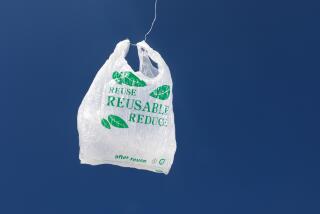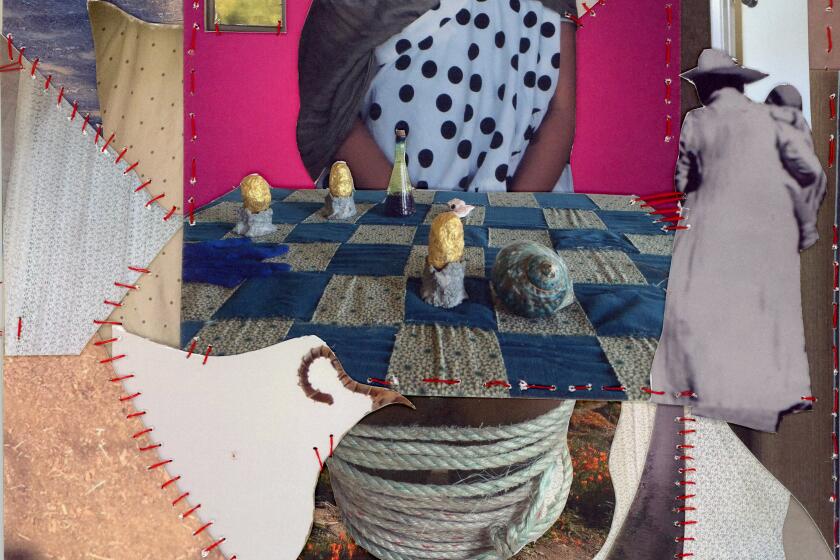Film canister uses
This story is the first in an occasional installment of a new feature about recycling, reinventing and reimagining old objects.
Call it a lust for rust. The plastic bin is piled to the top with tarnished metal tins, partially hidden beneath a table displaying 1930s hardware at Pasadena Architectural Salvage.
Store manager Gayle Stoner pulls out the box and reveals vintage 35-millimeter film tins.
Embossed with names such as DuPont and Eastman Kodak Co., the two-piece canisters once held feature film reels.
“That’s how they shipped movies all over the place,” she says. “Some guy brought them in and asked whether we could do anything with them -- he gave them to us.”
Stoner figures that the 10- to 14-inch-diameter tins date to the 1950s or ‘60s. Back in the day, she confides, the tightly fitting canisters had a pop- ular alternative use: storing marijuana.
“They were the best because they were big -- and you could close the lid really quick to hide a joint,” Stoner says.
For $5 each, the tins are a bargain, given their potential for new life, one that would show off their rustic patina and vintage character. (A spot check on EBay turned up similar tins priced between $15 and $25 each.)
When separated, each canister’s lid and base have nice rims, 1 to 2 inches deep -- just right for an hors d’oeuvre or cocktail tray.
The slightly uneven tins can be stabilized with a plastic or glass insert. Eddie Vallely, sales manager at Oakstone Glass Corp. in Thousand Oaks, suggests using one-quarter-inch-thick clear glass, cut to fit inside the tray.
“While it could break, glass doesn’t scratch as easily as Plexiglas,” he says. “It’s also cheaper.”
Oakstone made a circular pattern to fit each tin and cut round pieces of glass slightly smaller than the trays. Each piece of glass was about $15, including the hand-polishing of the edges.
Here’s how to assemble a tray:
1. While working outdoors, spray clear, matte-finish sealer over the rusty surface of the metal. The sealer prevents rust from rubbing off when the tins are handled.
2. Use the tin as a pattern to trace a circle on mat board. Use a thick layer of newspaper or cardboard as your work surface and carefully cut out the piece of mat board with a sharp blade or knife.
3. Lay the round mat board inside the tin tray. You may need to make small adjustments with the knife or scissors so it fits evenly.
4. Add decorative items to lie under the glass, such as a vintage map purchased from the Ventura Antique Market, and cut to fit. Old postcards, photographs or preserved leaves also work nicely. Secure the items in place with archival-quality, double-sided tape.
Cinephiles who want the tin’s origins to be more apparent can forgo the mat board and decorative detailing; instead, simply stabilize the round glass insert with three 1/2 -inch pieces of double-sided adhesive foam, which should be placed evenly around its edge. That will prevent the glass from wobbling on an uneven metal surface.
5. Once the glass has been set into the tray, you’re ready to pass the refreshments.
Reources:
Pasadena Architectural Salvage, (626) 535-9655, www.pasadenaarchitecturalsalvage.com. Oakstone Glass Corp., (818) 991-0333, www.oakstoneglass.com. Ventura Antique Market, (805) 653-0239.
More to Read
Sign up for our L.A. Times Plants newsletter
At the start of each month, get a roundup of upcoming plant-related activities and events in Southern California, along with links to tips and articles you may have missed.
You may occasionally receive promotional content from the Los Angeles Times.






